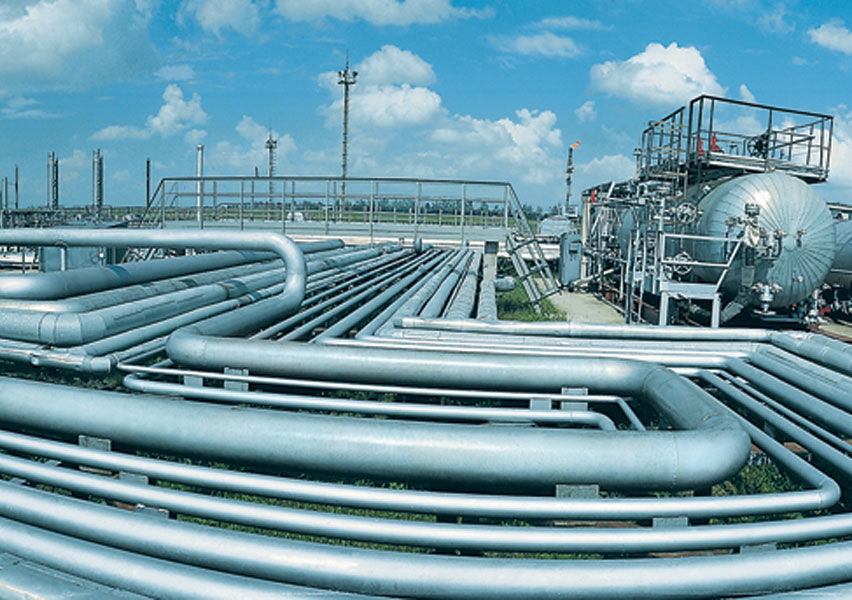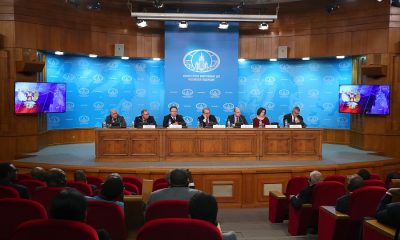World
Europe Turns to Africa to Meet Energy Needs Amid Russia-Ukraine Crisis
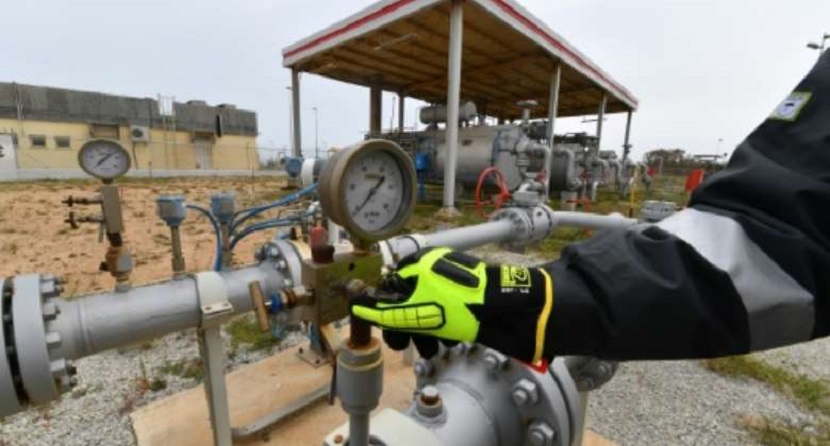
By Kester Kenn Klomegah
With the never-ending Russia-Ukraine crisis, Europe now turns to Africa for its energy needs. Notwithstanding the distance, European Union members have set their eyes on African oil and gas producing countries that could be potential alternative suppliers.
In the latest research developments, Italy becomes one more EU member closely coordinating with Algeria, Angola, Equatorial Guinea, Egypt, Nigeria and Mozambique.
During the first Russia-Africa summit, a number of African countries were soliciting Russia’s assistance in exploring their oil and gas reserves in Africa. Some agreements were signed with Russian companies such as Bashneft, Gazprom Neft, Lukoil, Rosneft et cetera.
Long before the start of the February 24 “special military operations” in Ukraine, many African leaders illogically failed to understand that Russia has always wanted to claim a global leading position in oil and gas supply. Experts have said that Africa’s supply would affect the aggregate global supply and consequently its prices.
According to official reports, the Russian Ministry of Natural Recourses and Environmental says that Bashneft and Gazprom Neft have expressed intention of joint development projects with Angola.
“The sides welcome Rosneft’s intention to develop cooperation with Angolan national oil company Sonangol in the area of studying potential joint development of oil and gas fields in Angola and Russia,” the protocol says.
As a direct result of the “special military operation” launched on February 24, Russia has come under a raft of unprecedented stringent sanctions imposed by the United States and Canada, the European Union, Japan, Australia, New Zealand and a host of other countries.
This has to be analysed and its geopolitical and business implications. The fact is that bilateral business relations and geopolitical impact are changing, to some degree. The crisis has absolutely posed challenges, but at the same time opened possibilities and prospects for establishing new partnership cooperation between state institutions as well as between foreign countries and Africa.
Eurasia Review research shows that Angola is Africa’s second-biggest oil producer after Nigeria. It has 1.7 billion tonnes of proven oil reserves and a resource portfolio of up to 3.5 billion tonnes, with liquid hydrocarbons predominating. Angola mainly develops fields under production-sharing agreements; Sonangol has a stake in the majority of them.
Media reports have said that Italy and a number of other EU members scramble to break away from Russian gas over the Ukraine war. This April, many of them turned to Africa. Angola and Italy have already signed a declaration of intent to develop new natural gas ventures and to increase exports to Italy, said a statement from the Italian Foreign Ministry.
“We have reached another important agreement with Angola to increase gas supplies. Italy’s commitment to differentiate energy supply sources is confirmed,” Foreign Minister Luigi Di Maio said in the statement at the end of a two-and-half-hour long visit to Luanda.
Prime Minister Mario Draghi wants to add Angola and the Congo Republic to a portfolio of suppliers to substitute Russia, which provides about 45 per cent of Italian gas.
“We do not want to depend on Russian gas any longer, because economic dependence must not become political subjection. Diversification is possible and can be implemented in a relatively short amount of time — quicker than we imagined just a month ago,” he said in an interview with the Corriere Della Sera daily published this April.
The deal was described as “an important agreement that gives impetus to the partnership between Italy and Angola in the fields of renewables, biofuels, LNG and training in technology and environment.”
The Italy delegation headed to neighbouring Brazzaville, the Republic of Congo, to meet President Denis Sassou Nguesso. A similar declaration is to be signed in the Republic of Congo.
The foray follows the signing of agreements with Algeria and Egypt in recent weeks. Algeria is currently Italy’s second-largest supplier, providing around 30 per cent of its consumption. ENI said the deal with Algeria’s Sonatrach would boost deliveries of gas through the Transmed undersea pipeline by “up to nine billion cubic meters per year” by 2023-24.
Transmed only had a spare pipeline capacity of 7.8 billion cubic meters per year in 2021 — though it has said it is ready to expand. Italy has also been in talks with Azerbaijan over the expansion of the Trans-Adriatic Pipeline (TAP).
Many experts have scholarly written about the implications of the Russia-Ukraine crisis, and what that means especially for Africa. For example, Research Fellow Danielle Resnick from the Brookings wrote that the crisis casts a long shadow across Africa. Despite the geographical distance, there are implications for pan-African solidarity and adherence to multilateralism is increasingly uncertain.
She further stressed that a few countries are sensing long-term growth opportunities from the crisis. Specifically, Africa’s natural gas could reduce Europe’s dependence on Russian energy. The African countries mentioned earlier in this article with dreams of re-outlining serious business on the global landscape, Tanzania has revamped negotiations with energy companies in the hopes of attracting $30 billion in foreign investment to revive construction of offshore liquefied natural gas projects in 2023.
From Nigeria to Niger to Algeria, the Trans-Saharan Gas Pipeline has specific importance as it can help to increase exports of natural gas to European markets. On February 16, the three countries signed an agreement to develop the pipeline, estimated to cost $13 billion. Europe is likely to be a key financer, bolstered by the EU’s controversial decision in early February to label investments in natural gas as green energy.
Now there are a few key questions: Can Africa really become the preferred gas and oil supplier to Europe? Will Russia invest in exploring and producing Africa’s oil and gas? Do African leaders understand that Russia wants to be the global leader and helping them explore oil and gas is illogical?
As European Union has already indicated during the last EU-AU summit, it looks at Africa from different perspectives and more importantly pushes for its economic footprints on the continent. Fresh from that EU-AU summit, there are agreements on several investment projects.
EU is committing approx. €300 billion ($340 billion) for financing new investment initiatives — similar to China’s Belt and Road initiative — an investment program the bloc claims would create links, not dependencies. EU and SADC, for instance, have been worrying about facilitating and coordinating the implementation of the regional agenda in Southern Africa.
As Research Fellow Danielle Resnick from the Brookings explicitly pointed out there would be tensions between the United States together Europe on one side and Russia, on the other, over Ukraine. Nevertheless, African leaders have to analyze this within the geopolitical context and take into account various scenarios for the near future.
The proximity of the European market gives the especially Maghreb, the North African country strategic significance to become a potential gas supplier. She cited Algeria, as the world’s sixth-largest gas exporter and the continent’s largest gas producer. It has already stated its intention to double exploration and production in the next five years, according to the International Energy Agency.
Algeria increased its export volumes to Europe from €40 billion in 2020 to 53 billion euros in 2021, and it is expected to export €46 billion or more in 2022, as demand in Europe is expected to continue to rise.
African countries can capitalize on current trends to attract much-needed investment in order to develop the infrastructure necessary to accelerate production for regional consumption and exportation while also reducing costs. According to Abdur-Rasheed Tunde Omidiya, President of the African Economic Commission, “the time to act on the Trans-African Gas plan is NOW.”
World
Comviva Wins at IBSi Global FinTech Innovation Award
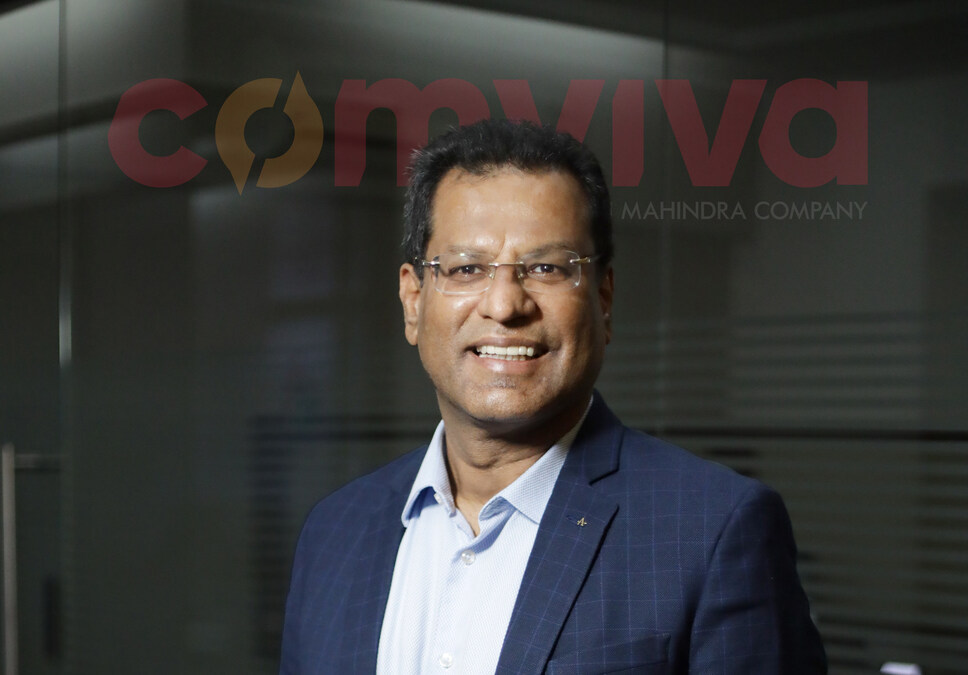
By Modupe Gbadeyanka
For transforming cross-border payments through its deployment with Global Money Exchange, Comviva has been named Best In-Class Cross Border Payments.
The global leader in digital transformation solutions clinched this latest accolade at the IBS Intelligence Global FinTech Innovation Award 2025.
The recognition highlights how Comviva’s mobiquity Pay is helping shape a modern cross-border payment ecosystem that stretches far beyond conventional remittance services.
Deployed as a white label Wallet Platform and launched as Global Pay Oman App, it fulfils GMEC’s dual vision—positioning itself as an innovative payment service provider while digitally extending its core money transfer business.
The solution allows GMEC to offer international money transfers alongside seamless forex ordering and other services. These capabilities sit alongside a broad suite of everyday financial services, including bill and utility payments, merchant transactions, education-related payments, and other digital conveniences — all delivered through one unified experience.
“This award is a testament to Oman’s accelerating digital transformation and our commitment to reshaping how cross-border payments serve people and businesses across the Sultanate.
“By partnering with Comviva and bringing the Global Pay Oman Super App, we have moved beyond traditional remittance services to create a truly inclusive and future-ready financial ecosystem.
“This innovation is not only enhancing convenience and transparency for our customers but is also supporting Oman’s broader vision of building a digitally empowered economy,” the Managing Director at Global Money Exchange, Subromoniyan K.S, said.
Also commenting, the chief executive of Comviva, Mr Rajesh Chandiramani, said, “Cross-border payments are becoming a daily necessity, not a niche service, particularly for migrant and trade-linked economies.
“This recognition from IBS Intelligence validates our focus on building payment platforms that combine global reach with local relevance, operational resilience and a strong user experience. The deployment with Global Money Exchange Co. demonstrates how mobiquity® Pay enables financial institutions to move beyond remittances and deliver integrated digital services at scale.”
“The deployment of mobiquity Pay for GMEC showcases how scalable, API-driven digital wallet platforms can transform cross-border payments into seamless, value-rich experiences.
“By integrating remittances, bill payments, forex services, and AI-powered engagement into a unified Super App, Comviva has reimagined customer journeys and operational agility.
“This Best-in-Class Cross-border Payments award win stands as a testament to Comviva’s excellence in enabling financial institutions to compete and grow in a digitally convergent world,” the Director for Research and Digital Properties at IBS Intelligence, Nikhil Gokhale, said.
World
Russia Renews Africa’s Strategic Action Plan
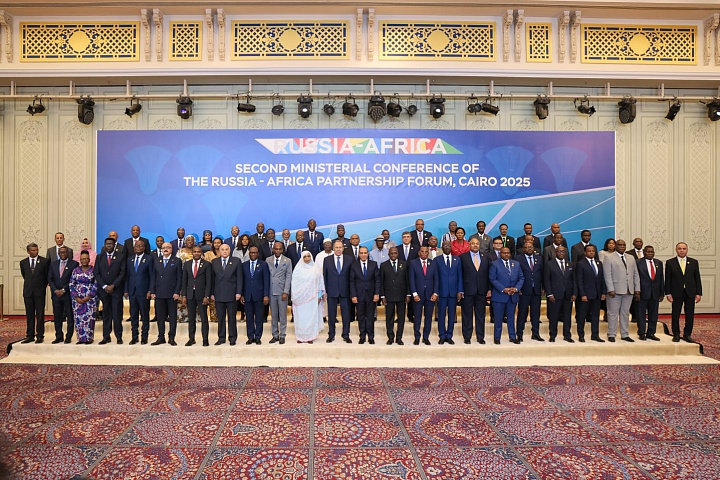
By Kestér Kenn Klomegâh
At the end of an extensive consultation with African foreign ministers, Russian Foreign Minister, Sergey Lavrov, has emphasized that Moscow would advance its economic engagement across Africa, admittedly outlining obstacles delaying the prompt implementation of several initiatives set forth in Strategic Action Plan (2023-2026) approved in St. Petersburg during the Russia-Africa Summit.
The second Ministerial Conference, by the Russian Foreign Ministry with support from Roscongress Foundation and the Arab Republic of Egypt, marked an important milestone towards raising bilateral investment and economic cooperation.
In Cairo, the capital city of the Arab Republic of Egypt, Lavrov read out the final resolution script, in a full-packed conference hall, and voiced strong confidence that Moscow would achieve its strategic economic goals with Africa, with support from the African Union (AU) and other Regional Economic blocs in the subsequent years. Despite the complexities posed by the Russia-Ukraine crisis, combined with geopolitical conditions inside the African continent, Moscow however reiterated its position to take serious steps in finding pragmatic prospects for mutual cooperation and improve multifaceted relations with Africa, distinctively in the different sectors: in trade, economic and investment spheres, education and culture, humanitarian and other promising areas.
The main event was the plenary session co-chaired by Russian Foreign Minister Sergey Lavrov and Egyptian Minister of Foreign Affairs, Emigration, and Egyptians Abroad Bashar Abdelathi. Welcome messages from Russian President Vladimir Putin and Egyptian President Abdelhak Sisi were read.
And broadly, the meeting participants compared notes on the most pressing issues on the international and Russian-African agendas, with a focus on the full implementation of the Russia-Africa Partnership Forum Action Plan for 2023-2026, approved at the second Russia-Africa Summit in St. Petersburg in 2023.
In addition, on the sidelines of the conference, Lavrov held talks with his African counterparts, and a number of bilateral documents were signed. A thematic event was held with the participation of Russian and African relevant agencies and organizations, aimed at unlocking the potential of trilateral Russia-Egypt-Africa cooperation in trade, economic, and educational spheres.
With changing times, Africa is rapidly becoming one of the key centers of a multipolar world order. It is experiencing a second awakening. Following their long-ago political independence, African countries are increasingly insisting on respect for their sovereignty and their right to independently manage their resources and destiny. Based on these conditions, it was concluded that Moscow begins an effective and comprehensive work on preparing a new three-year Cooperation and Joint Action Plan between Russia and Africa.
Moreover, these important areas of joint practical work are already detailed in the Joint Statement, which was unanimously approved and will serve as an important guideline for future work. According to reports, the Joint Statement reflects the progress of discussions on international and regional issues, as well as matters of global significance.
Following the conference, the Joint Statement adopted reflects shared approaches to addressing challenges and a mutual commitment to strengthening multifaceted cooperation with a view to ensuring high-quality preparation for the third Russia-Africa Summit in 2026.
On December 19-20, the Second Ministerial Conference of the Russia-Africa Partnership Forum was held in Cairo, Egypt. It was held for the first time on the African continent, attended by heads and representatives of the foreign policy ministries of 52 African states and the executive bodies of eight regional integration associations.
World
TikTok Signs Deal to Avoid US Ban
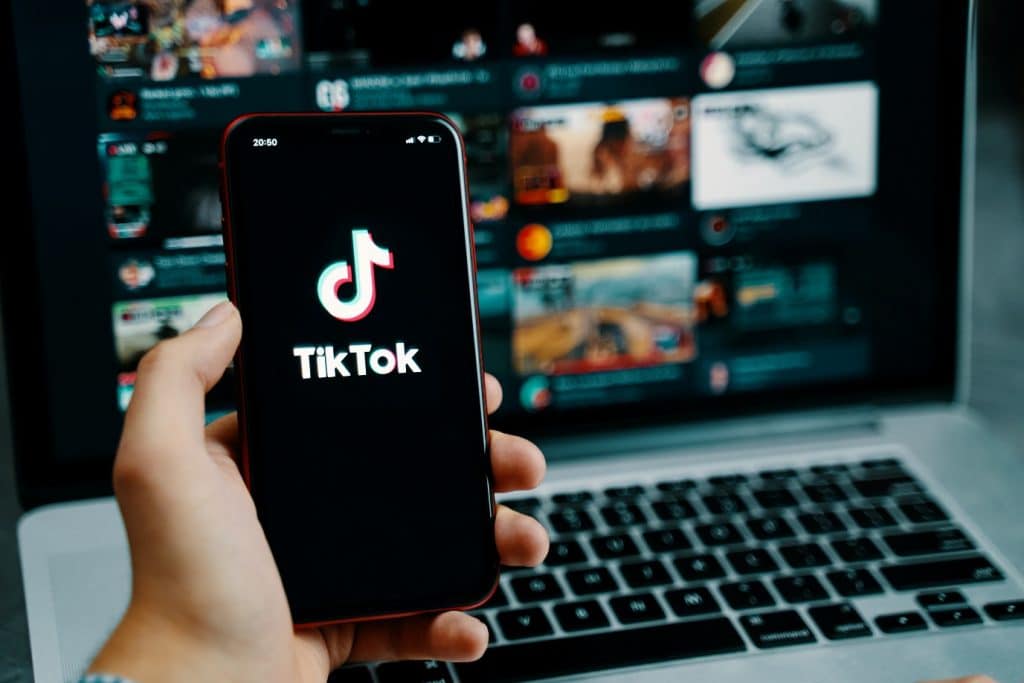
By Adedapo Adesanya
Social media platform, TikTok’s Chinese owner ByteDance has signed binding agreements with United States and global investors to operate its business in America.
Half of the joint venture will be owned by a group of investors, including Oracle, Silver Lake and the Emirati investment firm MGX, according to a memo sent by chief executive, Mr Shou Zi Chew.
The deal, which is set to close on January 22, 2026 would end years of efforts by the US government to force ByteDance to sell its US operations over national security concerns.
It is in line with a deal unveiled in September, when US President Donald Trump delayed the enforcement of a law that would ban the app unless it was sold.
In the memo, TikTok said the deal will enable “over 170 million Americans to continue discovering a world of endless possibilities as part of a vital global community”.
Under the agreement, ByteDance will retain 19.9 per cent of the business, while Oracle, Silver Lake and Abu Dhabi-based MGX will hold 15 per cent each.
Another 30.1 per cent will be held by affiliates of existing ByteDance investors, according to the memo.
The White House previously said that Oracle, which was co-founded by President Trump’s supporter Larry Ellison, will license TikTok’s recommendation algorithm as part of the deal.
The deal comes after a series of delays.
Business Post reported in April 2024 that the administration of President Joe Biden passed a law to ban the app over national security concerns, unless it was sold.
The law was set to go into effect on January 20, 2025 but was pushed back multiple times by President Trump, while his administration worked out a deal to transfer ownership.
President Trump said in September that he had spoken on the phone to China’s President Xi Jinping, who he said had given the deal the go ahead.
The platform’s future remained unclear after the leaders met face to face in October.
The app’s fate was clouded by ongoing tensions between the two nations on trade and other matters.
-

 Feature/OPED6 years ago
Feature/OPED6 years agoDavos was Different this year
-
Travel/Tourism9 years ago
Lagos Seals Western Lodge Hotel In Ikorodu
-

 Showbiz3 years ago
Showbiz3 years agoEstranged Lover Releases Videos of Empress Njamah Bathing
-

 Banking8 years ago
Banking8 years agoSort Codes of GTBank Branches in Nigeria
-

 Economy3 years ago
Economy3 years agoSubsidy Removal: CNG at N130 Per Litre Cheaper Than Petrol—IPMAN
-

 Banking3 years ago
Banking3 years agoFirst Bank Announces Planned Downtime
-

 Banking3 years ago
Banking3 years agoSort Codes of UBA Branches in Nigeria
-

 Sports3 years ago
Sports3 years agoHighest Paid Nigerian Footballer – How Much Do Nigerian Footballers Earn



